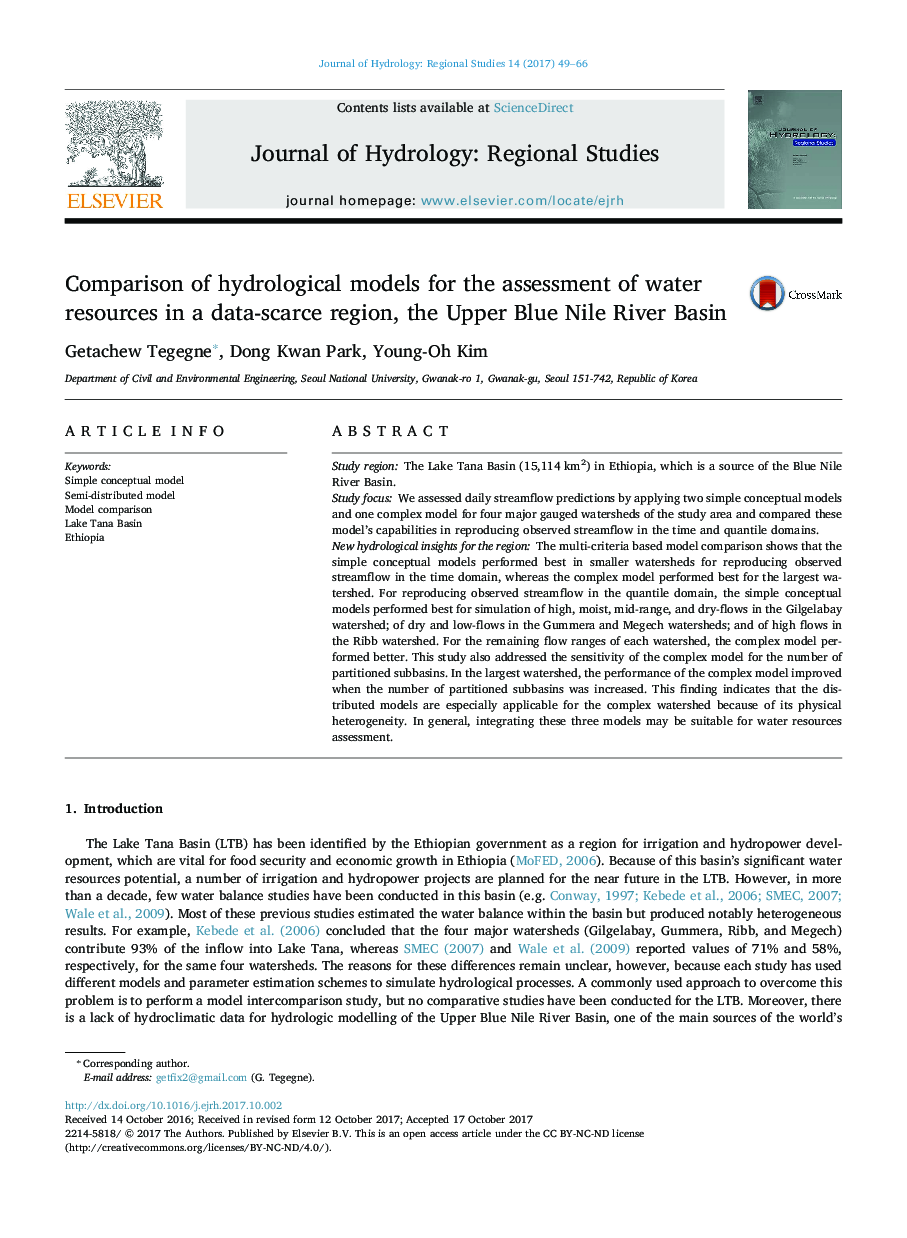| Article ID | Journal | Published Year | Pages | File Type |
|---|---|---|---|---|
| 8862903 | Journal of Hydrology: Regional Studies | 2017 | 18 Pages |
Abstract
The multi-criteria based model comparison shows that the simple conceptual models performed best in smaller watersheds for reproducing observed streamflow in the time domain, whereas the complex model performed best for the largest watershed. For reproducing observed streamflow in the quantile domain, the simple conceptual models performed best for simulation of high, moist, mid-range, and dry-flows in the Gilgelabay watershed; of dry and low-flows in the Gummera and Megech watersheds; and of high flows in the Ribb watershed. For the remaining flow ranges of each watershed, the complex model performed better. This study also addressed the sensitivity of the complex model for the number of partitioned subbasins. In the largest watershed, the performance of the complex model improved when the number of partitioned subbasins was increased. This finding indicates that the distributed models are especially applicable for the complex watershed because of its physical heterogeneity. In general, integrating these three models may be suitable for water resources assessment.
Related Topics
Physical Sciences and Engineering
Earth and Planetary Sciences
Earth-Surface Processes
Authors
Getachew Tegegne, Dong Kwan Park, Young-Oh Kim,
